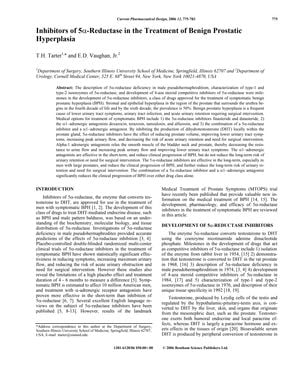Inhibitors of 5α-Reductase in the Treatment of Benign Prostatic Hyperplasia
February 2006
in “
Current pharmaceutical design
”

TLDR 5α-reductase inhibitors and alpha-1 adrenergic antagonists together effectively treat benign prostatic hyperplasia, with long-term benefits.
The document discussed the development and effectiveness of 5α-reductase inhibitors, such as finasteride and dutasteride, in treating benign prostatic hyperplasia (BPH). These inhibitors work by reducing dihydrotestosterone (DHT) levels in the prostate, which decreases prostate volume and improves urinary symptoms. Alpha-1 adrenergic antagonists, like doxazocin and tamsulosin, also help by relaxing the bladder neck and prostate muscles, improving urine flow. While α1-adrenergic antagonists are effective short-term, 5α-reductase inhibitors provide long-term benefits, especially for men with larger prostates, by reducing the risk of urinary retention and the need for surgery. Combining both drug classes significantly improves outcomes compared to using either alone.


